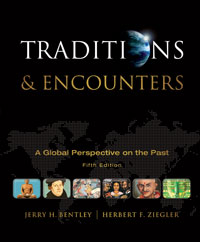1 Map A. Growth of the Roman Empire
This interactive map details the expansion of the Roman Republic and Empire. The Roman Republic was created in 509 BCE, and lasted until 27 BCE, when the reign of Augustus began. During the period of the Republic, territorial gains were made throughout Italy, parts of Spain, and surrounding Carthage in northern Africa. After the defeat of Carthage in the Punic Wars, Rome became involved in many other localized wars, and sections of Greece and Anatolia came under Roman influence. Under the military leadership of Julius Caesar, Rome's imperial expansion reached its height. Caesar carried out many successful campaigns in Britain and Gaul, and, after his successes throughout Roman territory, he became heavily involved with Roman politics. Concerned with many issues of reform and centralization, he appointed himself dictator for life. His assassination led to a period of civil wars until 27 BCE. His successor, Caesar Augustus, came to power, and the Roman Republic became the Roman Empire. By the 2nd century CE, the empire encompassed the entire Mediterranean region, parts of the Middle East, Gaul, and the majority of Britain.
Examine the map closely. What factors account for the expansion of the Roman Republic?
5 Map B. Fall of the Roman Empire
During the 5th and 6th centuries C.E., the Roman Empire faced many challenges. By 395 the empire had been split into two provinces; the Western and Eastern Roman Empire. The Eastern Roman Empire, which eventually became the Byzantine Empire, remained centralized and survived into the 15th century. The Western Empire was attacked repeatedly by various invaders, and by 476, the region was under the rule of Odovacer, a Germanic chieftain. This interactive map details the boundaries of the two regions, and shows the different waves of Germanic invasions that led to the defeat of the Western Empire.
Compare the growth of the Roman empire during the Republican period versus the imperial period. What were the main locales of expansion during each era?





